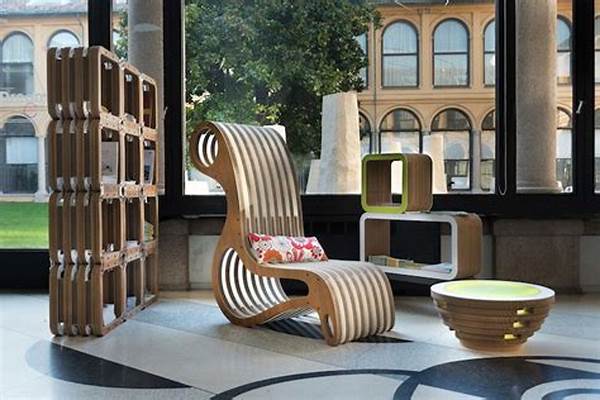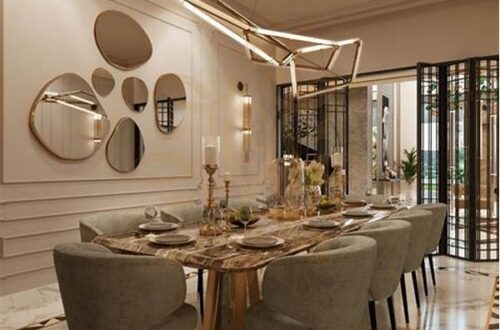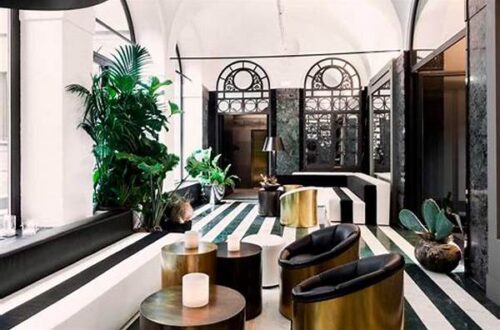In an era where sustainability is paramount, making conscious choices about home furnishings can have a significant impact on the planet. Eco-friendly furniture materials offer an opportunity to furnish your home stylishly while being mindful of environmental conservation. By choosing these materials, you’re not just making a statement of style, but also a pledge towards a sustainable future. Let’s explore how you can make a difference with eco-friendly furniture.
Read Now : Forest Lodge Open Space Architecture
The Importance of Choosing Eco-Friendly Furniture Materials
Choosing eco-friendly furniture materials is not merely a trend; it is a necessity in today’s world. Our planet faces increasing environmental challenges, and the furniture industry plays a significant role in this. By opting for eco-friendly furniture materials, you directly contribute to reducing your carbon footprint. These materials are sourced from renewable resources and are often biodegradable or recyclable, which minimizes waste and environmental impact.
Moreover, eco-friendly furniture materials like bamboo, reclaimed wood, and recycled metal not only offer durability but also reduce deforestation and depletion of non-renewable resources. Bamboo, for instance, grows rapidly and can be harvested without causing deforestation. Reclaimed wood salvaged from old buildings preserves natural resources by recycling what already exists, thereby avoiding the need for new harvesting.
Furthermore, using eco-friendly furniture materials benefits personal health. Conventional furniture often contains volatile organic compounds (VOCs), which can impact indoor air quality. In contrast, eco-friendly materials are typically free of harmful chemicals, promoting a healthier living environment. With a growing awareness of climate change and health concerns, making the conscious choice towards eco-friendly furniture is an investment in a sustainable future while enhancing the aesthetic value of your home.
Benefits of Eco-Friendly Furniture Materials
1. Sustainability: Eco-friendly furniture materials come from renewable resources and are often recyclable, contributing to sustainability.
2. Durability: Many eco-friendly materials, such as bamboo and reclaimed wood, offer long-lasting quality.
3. Healthier Living: These materials typically contain fewer harmful chemicals, enhancing indoor air quality.
4. Aesthetic Appeal: Eco-friendly furniture can offer unique and appealing designs, adding style to your home.
5. Environmental Impact: Choosing these materials helps reduce deforestation and conserve natural resources.
How to Identify High-Quality Eco-Friendly Furniture Materials
When shopping for eco-friendly furniture materials, it’s crucial to look for certifications like FSC (Forest Stewardship Council) or GREENGUARD, which ensure sustainable and low-emission products. Additionally, opting for furniture made from recycled or reclaimed resources guarantees that your choice contributes to environmental conservation. Remember that high-quality eco-friendly furniture should also withstand daily use, ensuring that aesthetics and durability go hand in hand.
Furthermore, being informed about the sourcing of materials helps you make better decisions. Choose brands that are transparent about their production process and labor practices. Sustainable brands often have clear policies and take active measures to minimize their environmental footprint, ensuring that you’re making a responsible purchase that aligns with your values.
Innovative Designs with Eco-Friendly Furniture Materials
1. Upcycled Metal Furniture: Transforming scrap metal into sleek, modern designs.
2. Bamboo-Based Pieces: Quick-growing bamboo crafted into elegant and sturdy furniture.
3. Recycled Plastic Seating: Chairs and benches made from reused plastic bottles.
Read Now : “scandinavian Furniture Design Characteristics”
4. Reclaimed Wood Tables: Unique, rustic tables sourced from old structures.
5. Cork Furniture Accents: Lightweight and renewable materials for various design elements.
6. Organic Cotton Upholstery: Non-toxic and biodegradable fabric choices.
7. Rattan Furniture: Lightweight, durable, and made from fast-growing plants.
8. Wool Rugs: Naturally sourced, insulating, and fire-resistant flooring options.
9. Natural Latex Mattresses: Derived from rubber trees and free from synthetic compounds.
10. Sustainable Timber: Responsibly sourced wood certified by environmental standards.
Making a Lasting Impact with Eco-Friendly Furniture Materials
Investing in eco-friendly furniture materials is a long-term commitment through which you express your dedication to a sustainable lifestyle. Beyond aesthetics, these choices contribute to the conservation of natural resources, reduction in waste, and minimization of harmful emissions. Whether you’re revamping your living space or starting anew, selecting eco-friendly options turns your home into a sanctuary that respects the planet.
Furthermore, the growing market for eco-friendly furniture materials has led to remarkable advancements in design and functionality. As more consumers prioritize sustainability, manufacturers are motivated to innovate, offering products that meet the highest standards of quality and style. By supporting these movements and manufacturers, you actively encourage the growth of sustainable practices within the industry.
Overcoming Myths About Eco-Friendly Furniture
A common misconception is that eco-friendly furniture materials are costlier and less stylish than conventional options. However, the reality is that these materials provide versatility and elegance comparable to any traditionally manufactured furniture. As the market adapts and consumer demand rises, costs become more competitive, making eco-friendly options accessible for all budget ranges.
In summary, embracing eco-friendly furniture materials is an investment in the future of our planet. By dispelling myths and recognizing the true value and benefits these materials bring, we encourage a more responsible and informed approach to furniture shopping. Your conscious decisions help pave the way for a healthier, more sustainable world, all while showcasing the timeless beauty and innovation inherent in eco-friendly design.





